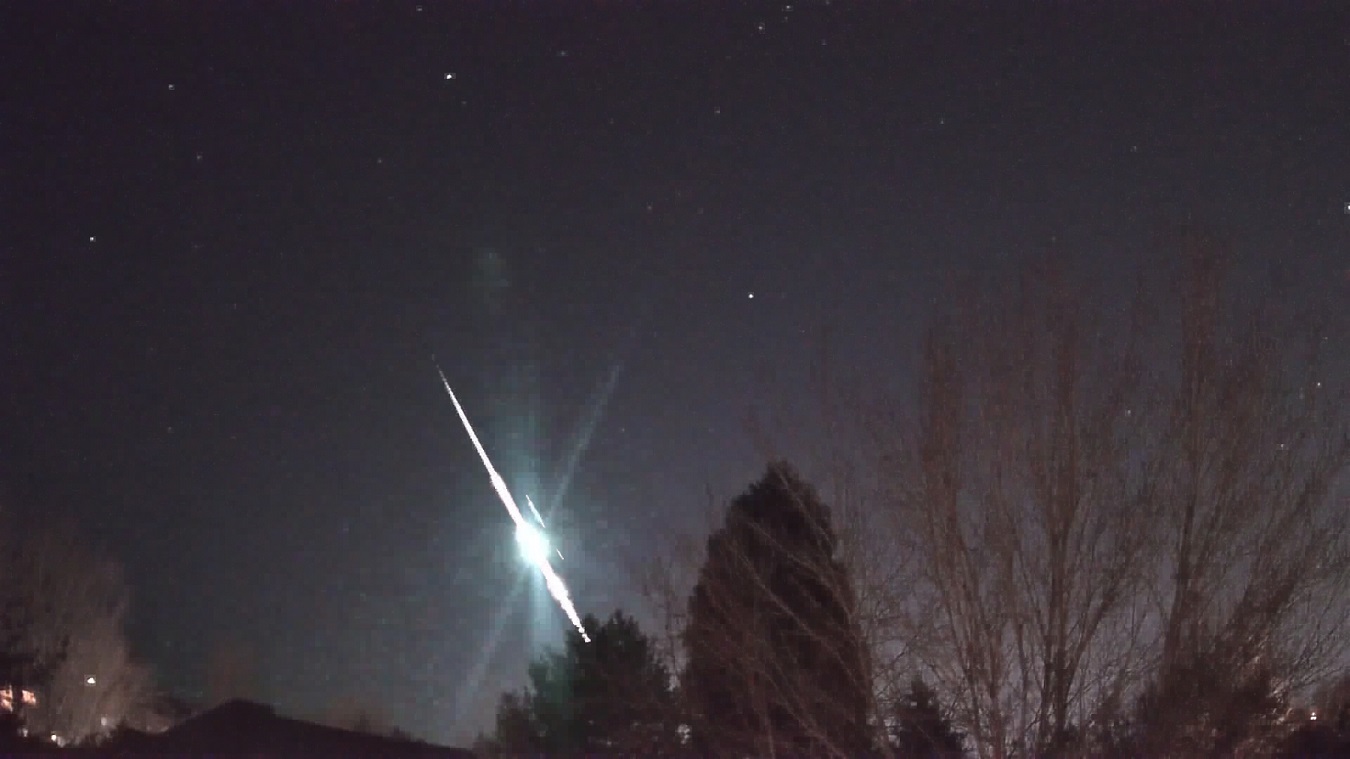This week, from May 24 to May 30, 2025, offers various opportunities for meteor observation. The Moon will enter its new phase on Tuesday, May 27th. This means it will be invisible at night, providing dark skies perfect for viewing. This weekend, a very thin crescent moon will rise just before dawn. It will not interfere with meteor observations.
Estimated Hourly Meteor Rates
The number of meteors you might see varies by location and time of night. These are estimated rates for dark sky locations.
Evening Viewing Rates
For observers in the evening this weekend, estimated total hourly rates are low. From mid-northern latitudes (45°N), expect about 3 meteors per hour. Tropical southern locations (25°S) might see around 4 meteors per hour.
Morning Viewing Rates
Morning observers will see more activity. From mid-northern latitudes (45°N), expect around 5 meteors per hour. Tropical southern locations (25°S) could see approximately 9 meteors per hour. Actual rates depend on factors like personal vision, local weather, alertness, and observing experience. Viewers in urban areas will see fewer meteors due to light pollution. Only the brightest meteors will be visible from such locations.
Locating Meteor Radiants
A meteor’s radiant is the point in the sky from which meteors appear to originate.
Radiant Positions for May 24/25
The radiant positions and rates provided are exact for Saturday night/Sunday morning, May 24th/25th. These positions remain fairly consistent throughout the week. You can use these coordinates for the entire period. Star atlases, available online, in bookstores, or at planetariums, provide maps with celestial coordinates. These help you locate specific sky positions.
Using Sky Charts for Observation
Charts displaying radiant positions for evening, midnight, and morning are helpful. The center of each chart represents the sky directly overhead at that specific hour. These charts are oriented for facing south but can be rotated for any direction. A planisphere or computer planetarium program also assists in showing the sky at any given time.
Best Viewing Times
Meteors are best seen when their radiant is highest in the sky. This is usually when it lies due north or south along the meridian, depending on your latitude. Radiants that rise after midnight will not reach their highest point until daylight. For these, observe during the last few hours before dawn. Remember, meteors rarely appear at their radiant position.
They shoot outwards from it. Therefore, center your field of view so the radiant is towards the edge. This allows you to trace the meteor’s path back to its origin. This helps determine if it’s a shower member or a sporadic meteor. Meteors are not visible from radiants located far below the horizon.
Active Meteor Showers This Week
Several meteor sources are expected to be active during this period. The positions below are listed from west to east by right ascension. Western positions are accessible earlier in the night.
Anthelion (ANT) Radiant
The large Anthelion (ANT) radiant is currently centered at 17:04 (256°) -23°. This position is in southern Ophiuchus. It lies 4 degrees northwest of the second magnitude star Theta Ophiuchi. Due to its size, activity may also appear from western Sagittarius and northern Scorpius. This radiant is best observed around 02:00 Local Daylight-Saving Time (LDST).
At this time, it lies on the meridian and nearly overhead. Rates should be around 2 per hour from the Northern Hemisphere. From south of the equator, expect around 3 per hour. Anthelion meteors have a medium-slow velocity, about 30 km/sec. This is a Class II shower.
eta Aquariids (ETA)
The eta Aquariids (ETA) are active from April 15 through May 27. Maximum activity was on May 4th. The radiant is currently at 23:21 (350°) +05°. This area is in western Pisces. It is 1 degree northeast of the fourth magnitude star Gamma Piscium. These meteors are not visible before 02:00 LDST. They are best seen just before dawn when the radiant is highest in the eastern sky. Rates are expected to be less than 1 per hour regardless of location. Eta Aquariid meteors have a swift velocity, around 67 km/sec. This is a Class I shower.
Daytime Arietids (ARI)
The Daytime Arietids (ARI) become active later in this period. On May 27th, the radiant will be at 02:25 (036°) +23°. This position is in western Aries. It is 4 degrees east of the second magnitude star Hamal (Alpha Arietis). This radiant is approximately 45 degrees west of the sun. Therefore, these meteors are only visible just before dawn.
Face the eastern sky to see them shoot upward from the horizon. Hourly rates are expected to be less than 1 at this time. These meteors have a medium velocity, about 39 km/sec. This is a Class IV shower. It is the strongest daylight shower of the year. Radio observers anticipate its maximum activity in the second week of June.
Sporadic Meteors: The Background Activity
Sporadic meteors are those not linked to any known meteor shower. All meteor showers eventually disperse and become unrecognizable. Away from major shower peaks, sporadic meteors make up most of the activity seen nightly.
Sporadic Rates by Location
From the mid-northern hemisphere (45°N), expect about 6 sporadic meteors per hour during the last hour before dawn. This is for rural observing sites. Evening rates would be near 2 per hour. From tropical southern latitudes (25°S), morning rates could reach 10 per hour. Evening rates would be around 3 per hour. Locations between these extremes will see activity proportionate to their latitude.
Identifying Meteor Showers: Tips for Observers
The table below provides information for showers discernable by visual observers. Hourly rates are often low, so these are rarely listed in most meteor shower guides. For those who wish to associate as many meteors as possible with known sources, these listings are valuable.
Confirming Shower Association
Before listing meteors from Class IV showers, try to confirm their origin. Ensure they are not random sporadic meteors. Note parameters like duration, length, radiant distance, and elevation. This helps compute the probability of shower association. Remember, slow meteors can appear from fast showers. However, fast meteors cannot come from slow showers. Slow showers have velocities less than 35 km/sec. Slow meteors from fast showers usually appear close to the radiant or low in the sky.
The IMO’s 2025 Meteor Shower Calendar (page 22) offers a helpful table. If you record each meteor’s length and duration, this chart aids identification. Compare the meteor’s angular velocity to the table’s figures. If similar, your meteor likely belongs to that shower. Rates and positions in the table are exact for Saturday night/Sunday morning.
Meteor Shower Summary Table
| Shower | Date of Maximum Activity | Celestial Position (RA (Deg.) Dec) | Entry Velocity (km/Sec) | Culmination (Local Daylight-Saving Time) | Hourly Rate (North-South) | Class |
|---|---|---|---|---|---|---|
| Anthelion (ANT) | – | 17:04 (256) -23 | 30 | 02:00 | 2 – 3 | II |
| eta Aquariids (ETA) | May 04 | 23:21 (350) +05 | 67 | 09:00 | <1 – <1 | I |
| Daytime Arietids (ARI) | Jun 10 | 02:25 (036) +23 | 39 | 12:00 | <1 – <1 | IV |
Class Explanation: Meteor Shower Intensity
- Class I: Strongest annual showers. Zenith Hourly Rates (ZHR) are typically ten or more.
- Class II: Reliable minor showers. ZHRs are normally between two and ten.
- Class III: Showers that do not provide annual activity. They are rarely active but can occasionally produce a major display.
- Class IV: Weak minor showers. ZHRs rarely exceed two. These are best studied by experienced observers using plotting and angular velocity estimates for association. They are also good targets for video and photographic work. Less experienced observers should focus on Class I to III showers.







